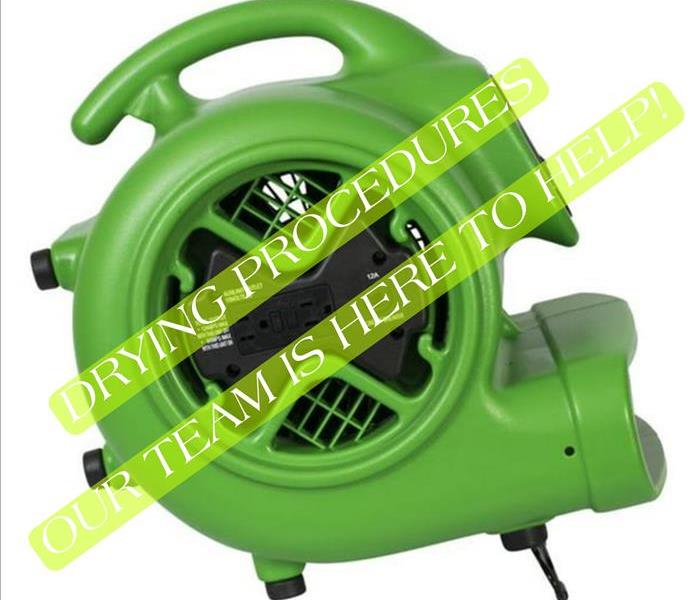Air Movers & Drying Process
7/3/2023 (Permalink)
“Structure and contents
When working within a residence, it is often the case that those who are performing the water damage restoration must work with and around the contents of the home. This includes, but is not limited to, furniture, electronics, books, and any other materials that may have been affected by the water damage. The moving around of the said contents is often referred to "contents manipulation." Water damage restoration firms often bill content manipulation on a per hour basis.
Contents may also require treatment due to the effects of water damage. This may include, but is not limited to, sterilization, sanitization, deodorization, drying, and storage of said contents. Other contents may simply be unsalvageable, or the cost of having them salvaged would exceed its current value.
Monitoring
After the water has been extracted and any non-salvageable materials have been removed, water damage professionals should place drying equipment according to industry guidelines for capacity in the affected areas. Industry standards state that drying vendors should return to the residence at regular time intervals, preferably every twenty-four hours, to monitor the equipment, temperature, humidity, and moisture content of the affected walls, contents, or other affected materials. Should one area be dry and another affected area still wet, the firm will relocate or remove equipment accordingly.
Completion
Once temperature, humidity, and moisture content are deemed acceptable according to industry standards, drying equipment is removed and the drying process is complete. There are defining criteria and methods to be used for assessing water damage and establishing restoration procedures, but because of the unique circumstances of every water damage restoration project, it is impractical to issue blanket rules that apply to every situation. In extenuating circumstances, deviation from standard practices is appropriate.
Step-by-step process
Though the water seepage will stop once the source of water has been identified and plugged, the problem does not end there. It is essential to determine the appropriate water extraction method, which may range from the use of a wet-dry vac unit to more heavy duty equipment like submersible pumps. Once this has been completed, the process of drying and dehumidification should start. Oftentimes, affected surfaces and areas look dry once the water has been extracted and removed, but there remains hidden water and moisture. This would call for the use of drying and dehumidifying equipment. As such, carpets, walls, and flooring require removal, drying, cleaning, and disinfecting."






 24/7 Emergency Service
24/7 Emergency Service
